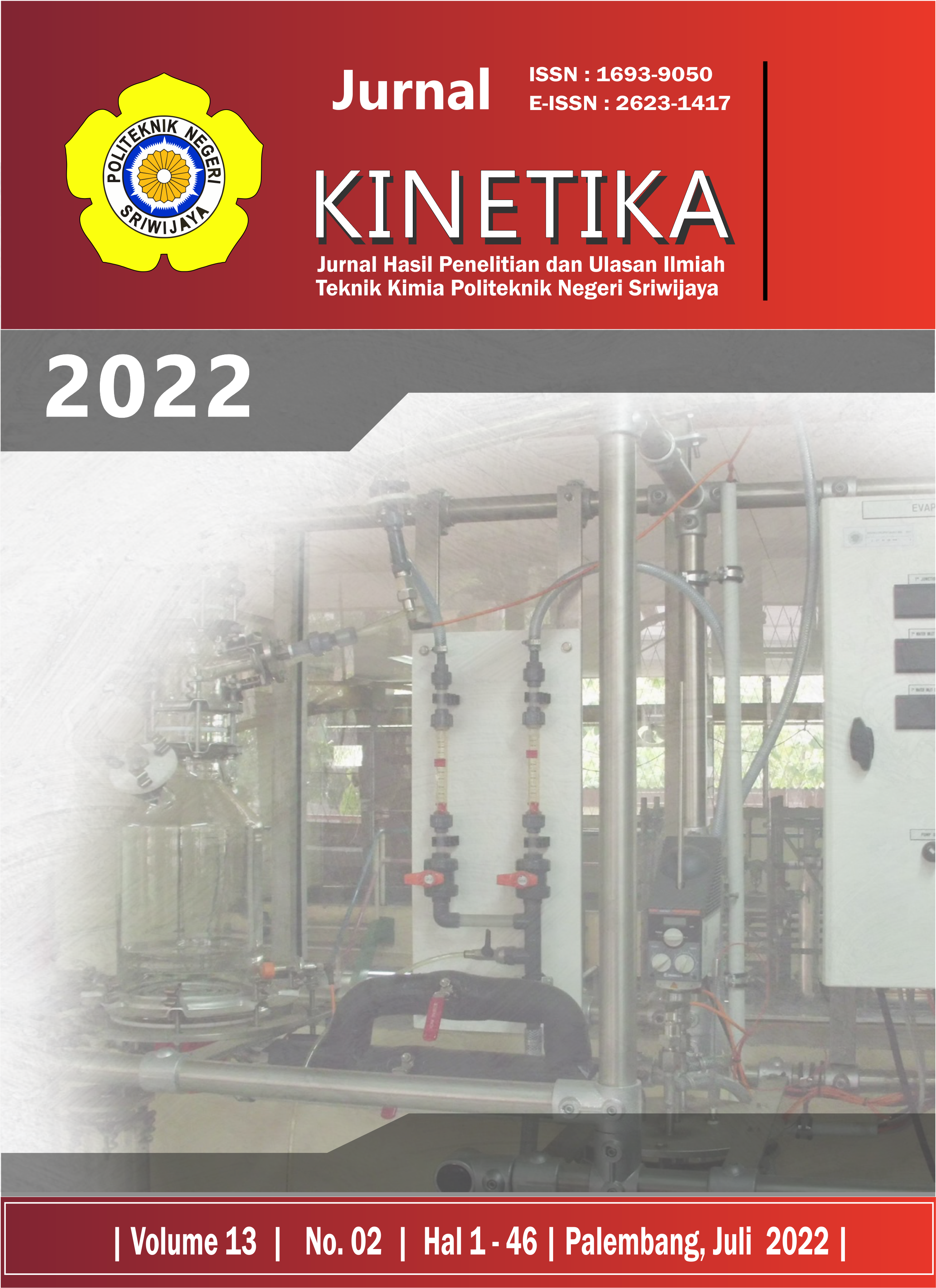SYNTHESIS AND CHARACTERIZATION OF CELLULOSE ACETATE FROM EMPTY PALM OIL BUNCHES AS RAW MATERIAL FOR BIOPLASTIC
Abstract
Synthesis and characterization of cellulose acetate from cellulose of empty fruit bunches (EFB) have been carried out using the Celanese method, namely glacial acetic acid as swelling agent and acetic anhydride as acetylating agent. The research was carried out through the preparation of raw materials, cellulose extraction and synthesis of cellulose acetate from ï¡-cellulose of empty fruit bunches. This study aims to determine the effect of variations in solvent concentration on yield, acetyl content, degree of substitution and moisture content of cellulose acetate and to obtain the characteristics of cellulose that are suitable for application as raw material for making bioplastics. The concentration variations of the solvent used were (10, 15, 20, 25 and 30) % wt/v, with ï¡-cellulose ratio: glacial acetate (1:10), ï¡-cellulose ratio : acetic anhydride (1:5), acetylation time 1.5 hours, acetylation temperature 40°C and stirring speed 200 Rpm. The results showed that the cellulose acetate obtained from the synthesis has characteristics such as cellulose monoacetate and cellulose diacetate with solid form in the form of a powder, white in color and odorless. The best characteristic of cellulose acetate has a yield product of 75%, acetyl content of 36.927%, degree of substitution (DS) 2.22, and water content of 5.75%.


